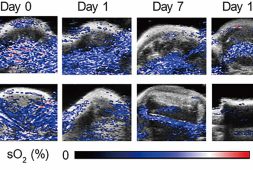Former 80-Year-Old Antibiotic Returns As Highly Capable Medication Against Multi-Drug-Resistant Superbugs

In a groundbreaking new study, researchers found that an 80-year-old antibiotic, once discarded due to toxicity concerns, could hold the key to fighting multi-drug resistant superbugs.
Back in the 1940s, scientists discovered a natural product called nourseothricin, produced by a soil fungus. It contained various forms of a complex molecule known as streptothricin and showed promise as a potent agent against gram-negative bacteria.
These bacteria are notoriously difficult to treat due to their thick outer protective layer, which renders them resistant to many conventional antibiotics.
However, nourseothricin was found to be toxic to human kidneys during their period of early development. This led to its abandonment. But the growing threat of antibiotic-resistant bacterial infections has renewed the search for new solutions, prompting Professor James Kirby and his team at Harvard Medical School to take another look at nourseothricin.
Dr. Kirby shared in the study about the compound that early tests of nourseothricin experienced incomplete purification of the streptothricin.
With more recent advancements, they discovered that different forms of the molecule had varying toxicities. Among them, streptothricin-F emerged as significantly less toxic while remaining highly effective against contemporary multidrug-resistant pathogens.
The research team delved further into the antibacterial action, renal (kidney) toxicity, and mechanism of action of two purified forms of streptothricins D and F. Streptothricin-D showed a much higher potency than streptothricin-F when it came to drug-resistant Enterobacterales and other forms of bacterial species. However, it also caused renal toxicity at a lower dosage.
Dr. Kirby shared, “Based on unique, promising activity, we believe the streptothricin scaffold deserves further pre-clinical exploration as a potential therapeutic for the treatment of multidrug-resistant, Gram-negative pathogens”
“Isolated in 1942, streptothricin was the first antibiotic discovered with potent gram-negative activity. We find that not only is its activity potent, but that it is highly active against the hardiest contemporary multidrug-resistant pathogens and works by a unique mechanism to inhibition protein synthesis,” he added.
This incredible finding opens up new possibilities for the use of nourseothricin and its less toxic forms in the battle against antibiotic-resistant superbugs. As further research unfolds, there may be a chance to harness the power of this decades-old antibiotic to save lives and combat the growing threat of drug-resistant infections.



